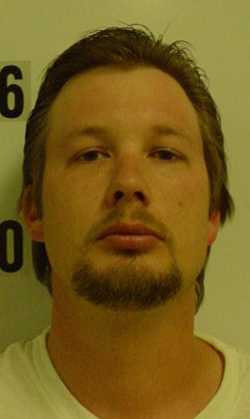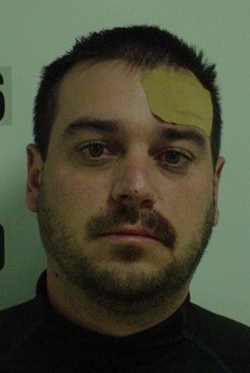- Lake County News reports
Helping Paws: All kinds of dogs, and puppies, too
There are a number of mixed breed adults, as well as two litters of puppies.
Dogs that are adopted from Lake County Animal Care and Control are either neutered or spayed, microchipped and, if old enough, given a rabies shot and county license before being released to their new owner. License fees do not apply to residents of the cities of Lakeport or Clearlake.
If you're looking for a new companion, visit the shelter. There are many great pets hoping you'll choose them.
The following dogs at the Lake County Animal Care and Control shelter have been cleared for adoption.

Matombo
Matombo is a 10-month-old male pit bull terrier mix.
He weighs 62 pounds and is not neutered.
Matombo is located in kennel No. 17, ID No. 31231.

Female shepherd mix
This black female shepherd mix is 3 years old.
She has brown eyes, a long coat and weighs just under 48 pounds.
She is located in kennel No. 10, ID No. 31393.

St. Bernard mix
This 7-year-old male is a St. Bernard-springer spaniel mix.
He has a long, black and white spotted coat. He is unaltered.
Find him in kennel No. 13, ID No. 31453.

Boxer-pointer puppies
These five little female puppies are 11-week-old boxer-pointer mixes.
The pups are tan and white, with brown eyes. They have short coats.
They are in kennel No. 18a, ID No. 31496.

Brindle pit bull mix
This male pit bull terrier mix has brown brindle coloring and a short coat.
An estimate of his age was not given. He is not yet neutered.
He's in kennel No. 19, ID No. 31466.

Jack Russell-beagle mix
This female Jack Russell Terrier-beagle mix is 3 years old.
She has a short, white and tan coat and floppy ears. She is not yet spayed.
She's in kennel No. 23, ID No. 31495.

Dachshund mix puppies
These little pups are 7-week-old dachshund mixes.
The litter includes three males and five females.
They have long coats, mostly black in color but with some white markings, and floppy ears.
Find the puppies in kennel No. 3, ID No. 31446.

Female shepherd mix
This female shepherd mix is 4 years old.
She has black and tan coloring, brown eyes and a short coat.
Find her in kennel No. 5, ID No. 31429.

Female pit bull mix
This female pit bull terrier mix is 3 years old.
She has black and white coloring and a short coat, with brown eyes.
Find her in kennel No. 6a, ID No. 31471.

Female pit bull terrier mix
This 3-year-old female is a pit bull terrier mix.
She has black and white coloring, a short coat and a long tail, plus floppy ears and brown eyes.
Find her in kennel No. 6b, ID No. 31472.
Adoptable dogs also can be seen at http://www.co.lake.ca.us/Government/Directory/Animal_Care_And_Control/Adopt/Dogs_and_Puppies.htm or at www.petfinder.com.
Please note: Dogs listed at the shelter's Web page that are said to be “on hold” are not yet cleared for adoption.
To fill out an adoption application online visit http://www.co.lake.ca.us/Government/Directory/Animal_Care_And_Control/Adopt/Dog___Cat_Adoption_Application.htm.
Lake County Animal Care and Control is located at 4949 Helbush in Lakeport, next to the Hill Road Correctional Facility.
Office hours are Monday through Friday, 8 a.m. to 5 p.m., and 1 p.m. to 3 p.m., Saturday. The shelter is open from 10:30 a.m. to 4:30 p.m. Monday through Friday and on Saturday from 1 p.m. to 3 p.m.
Visit the shelter online at http://www.co.lake.ca.us/Government/Directory/Animal_Care_And_Control.htm.
For more information call Lake County Animal Care and Control at 707-263-0278.
Follow Lake County News on Twitter at http://twitter.com/LakeCoNews, on Tumblr at www.lakeconews.tumblr.com, on Google+, on Facebook at www.facebook.com/pages/Lake-County-News/143156775604?ref=mf and on YouTube at www.youtube.com/user/LakeCoNews .

 How to resolve AdBlock issue?
How to resolve AdBlock issue? 








